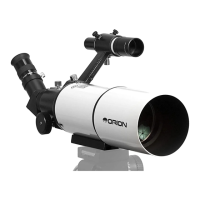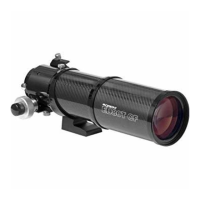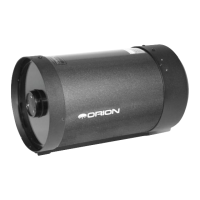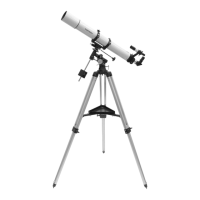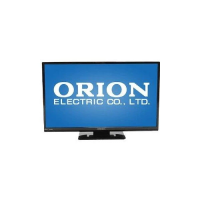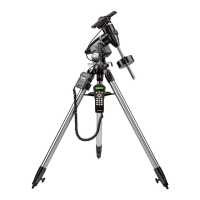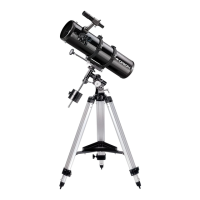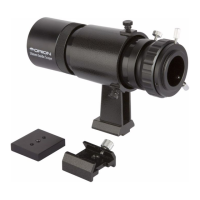17
time see a mini representation of your local night sky. Great for identifying what you
see and planning an evening’s observing session.
• Orion Telescope Observer’s Guide (book) – This book will help you explore
amazing celestial objects including nebulas, double and multiple stars, star clus-
ters, the Andromeda Galaxy, and more. With a full page of information dedicated
to each interesting object, author Richard J. Bartlett leads you on a detailed tour
of the night sky as he describes over 60 fascinating astronomical objects that can
easily be seen with a small telescope.
Orion carries these and many other useful accessories to help enhance your
viewing experience with your telescope. Visit our website at
www.OrionTelescopes.com.
8. Specifications
Primary Mirror: 76mm (3") diameter, spherical
Focal Length: 300mm
Focal Ratio: f/3.9
Focuser: 1.25" Rack and Pinion
Eyepieces: 20mm and 6mm Kellner,
multiple antireection coatings
Magnication with supplied eyepieces: 50x, 15x
Assembled weight: 3 lbs., 11 oz
Figure 9. A star test will determine if the telescope’s optics are properly collimated. An
unfocused view of a bright star through the eyepiece should appear as illustrated on the
right if the optics are perfectly collimated. If the circle is unsymmetrical, as illustrated on
the left, the scope needs collimation.
